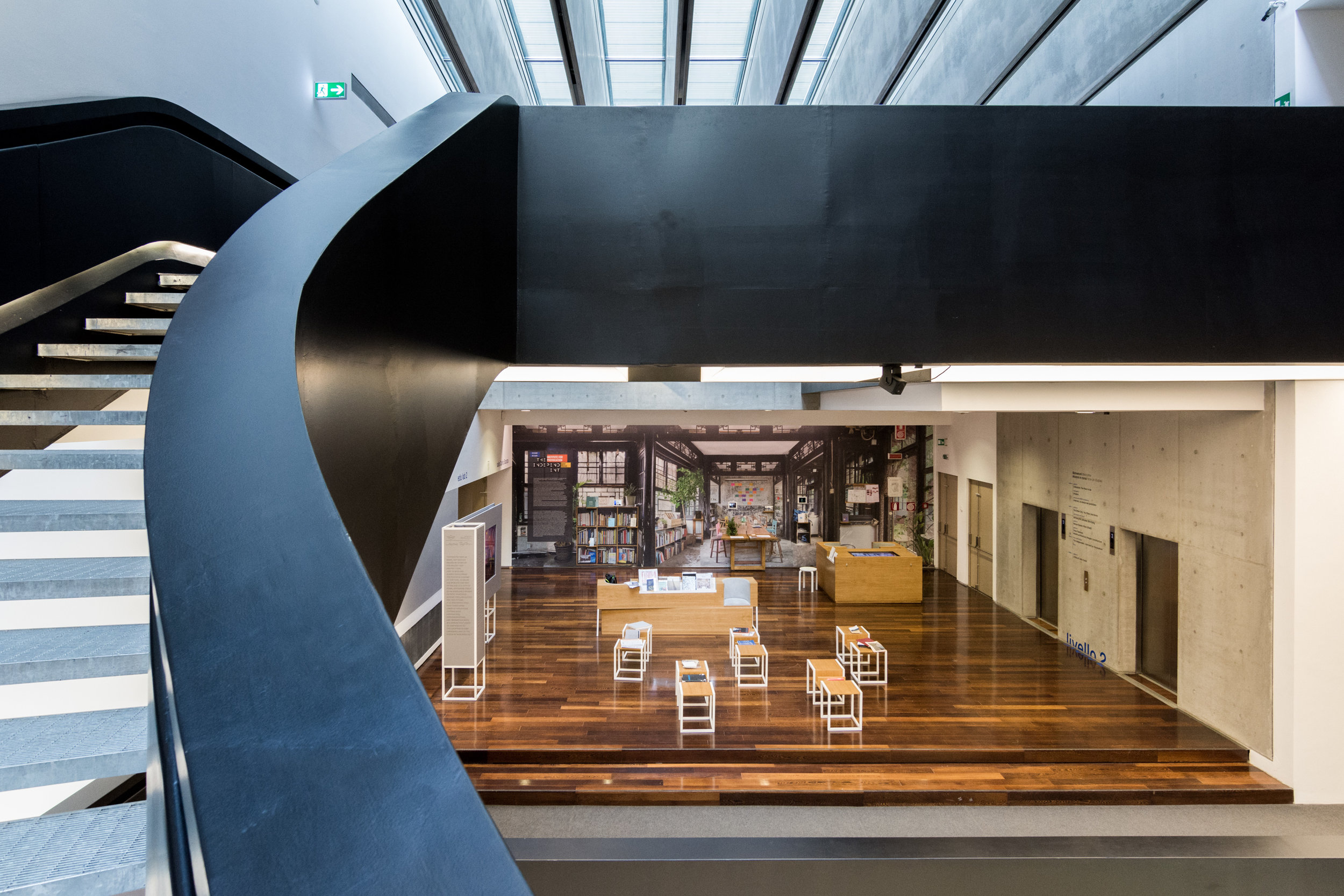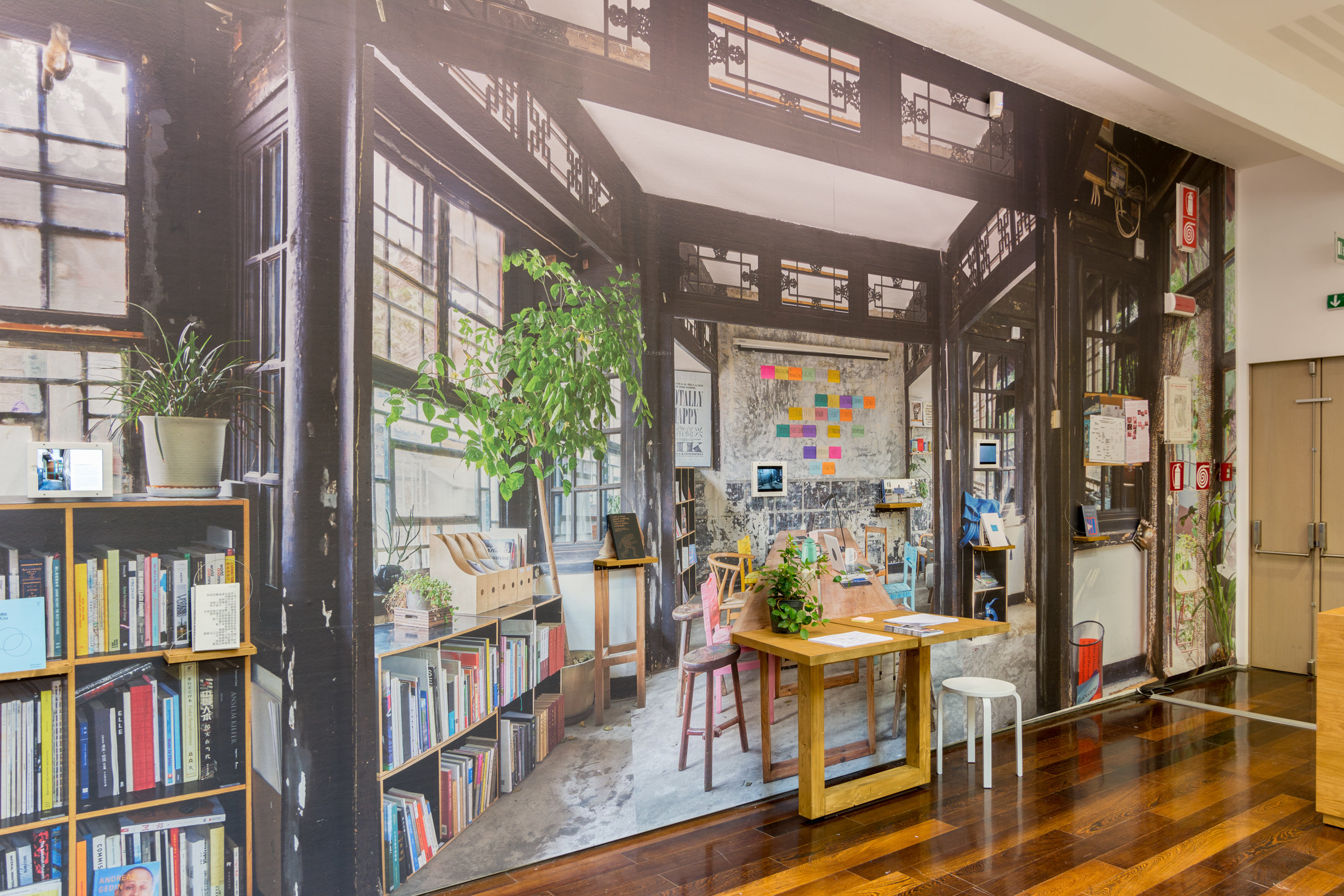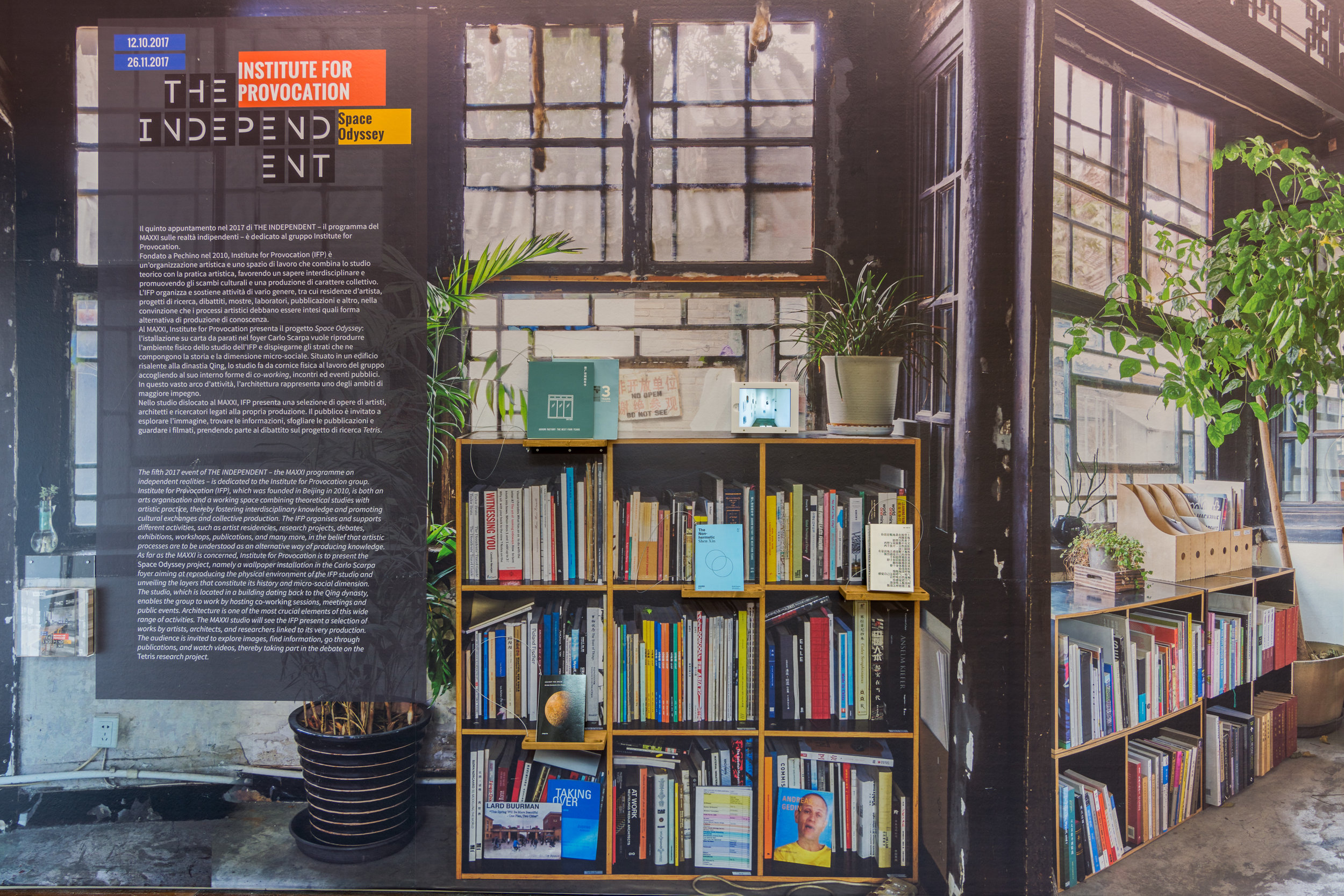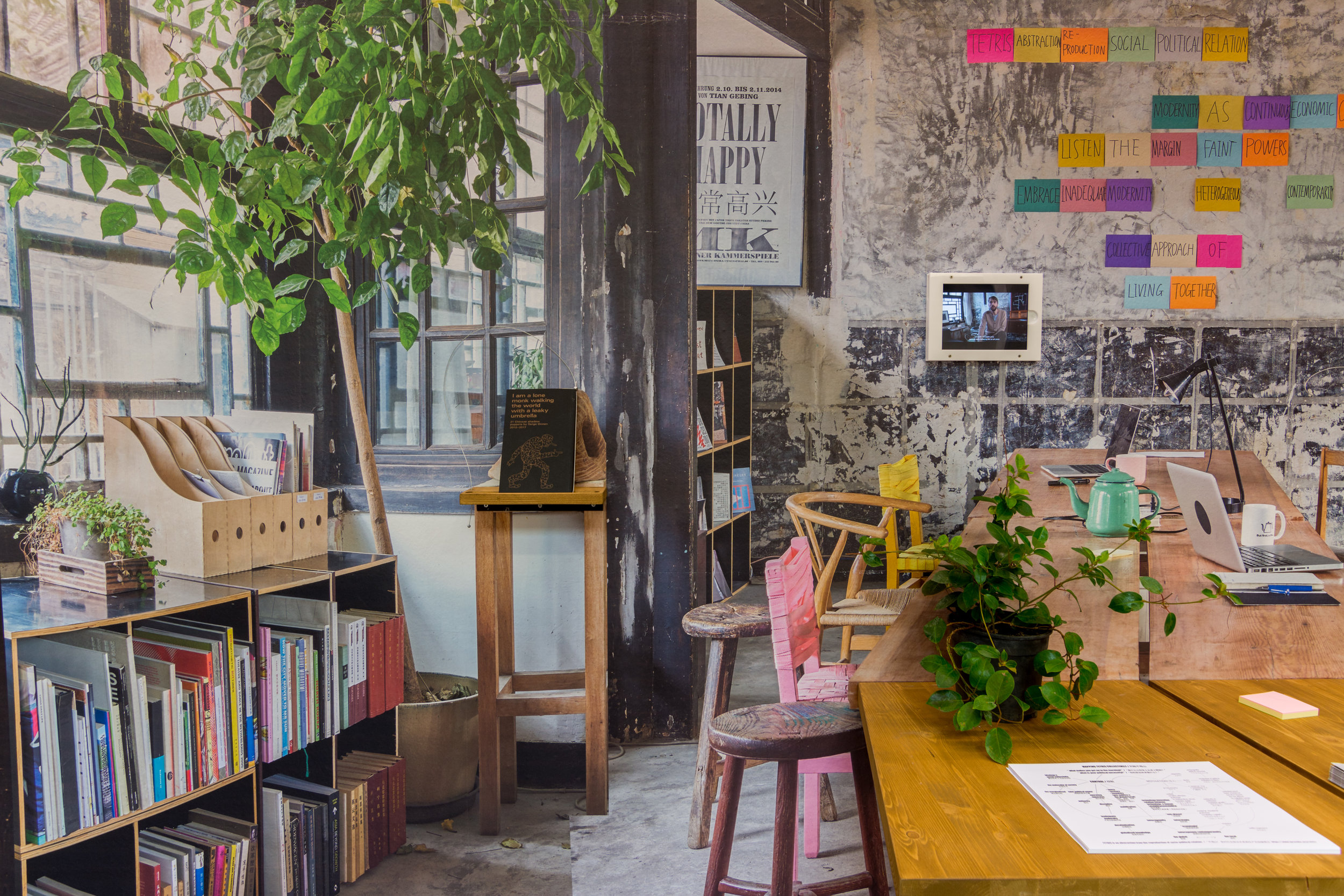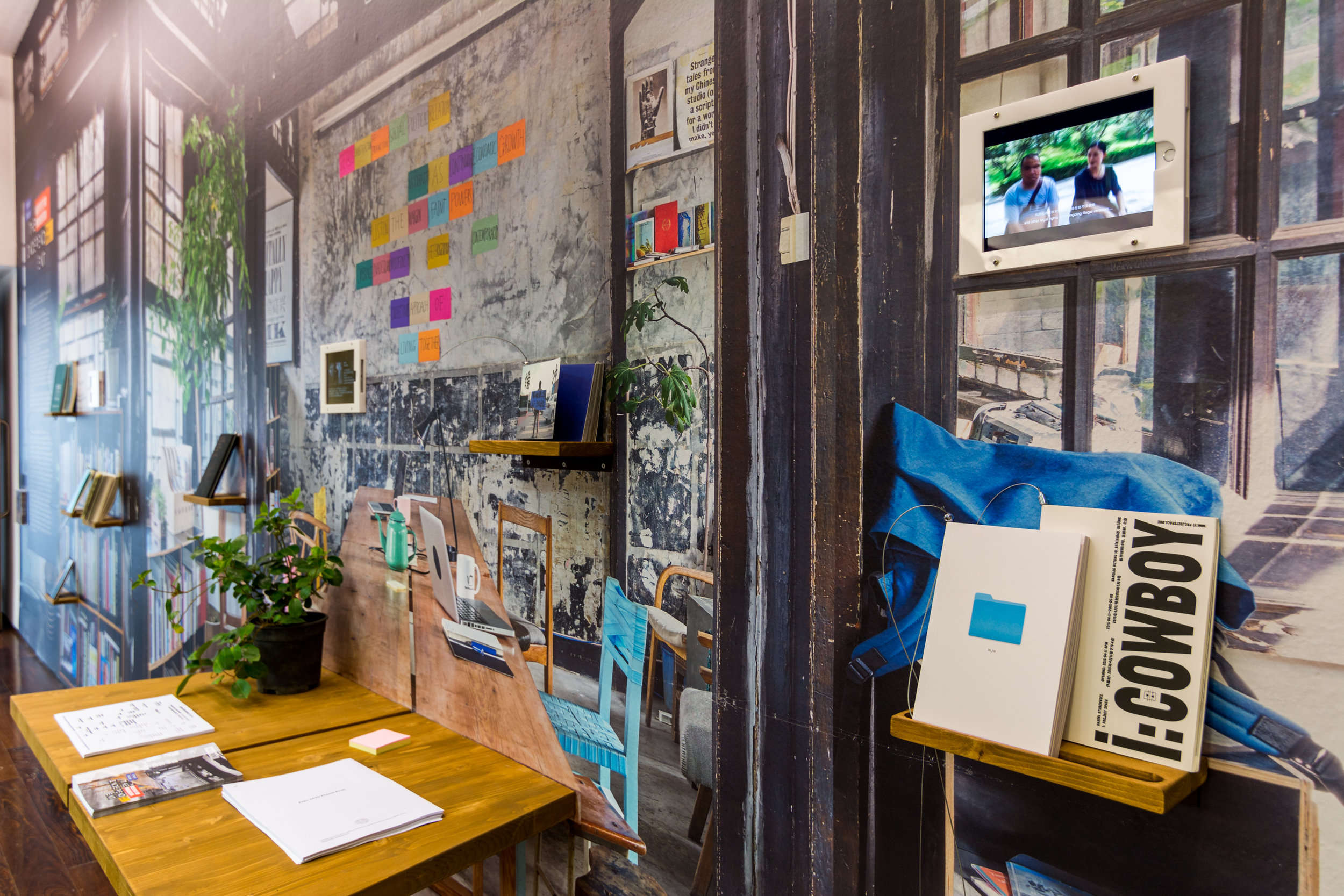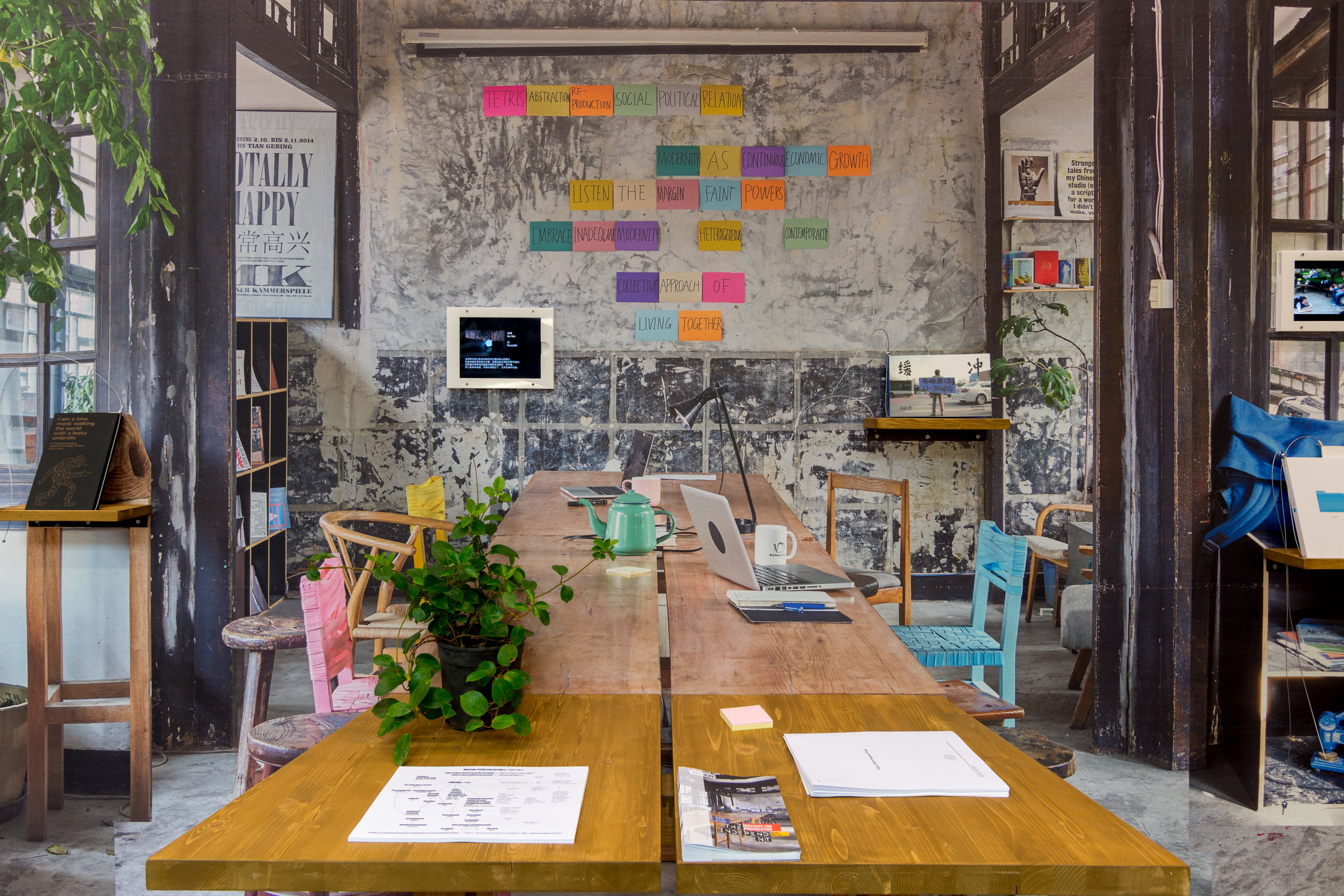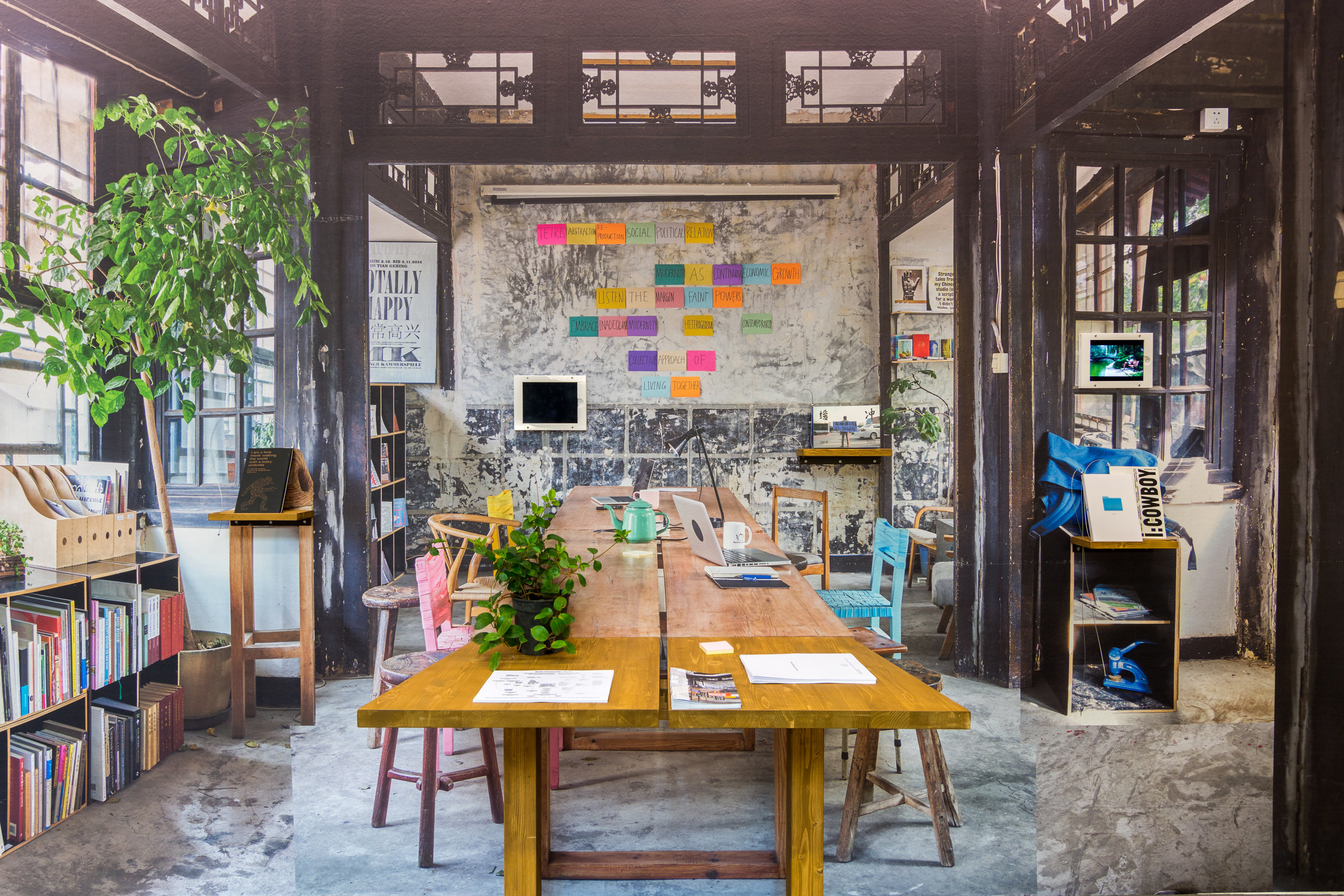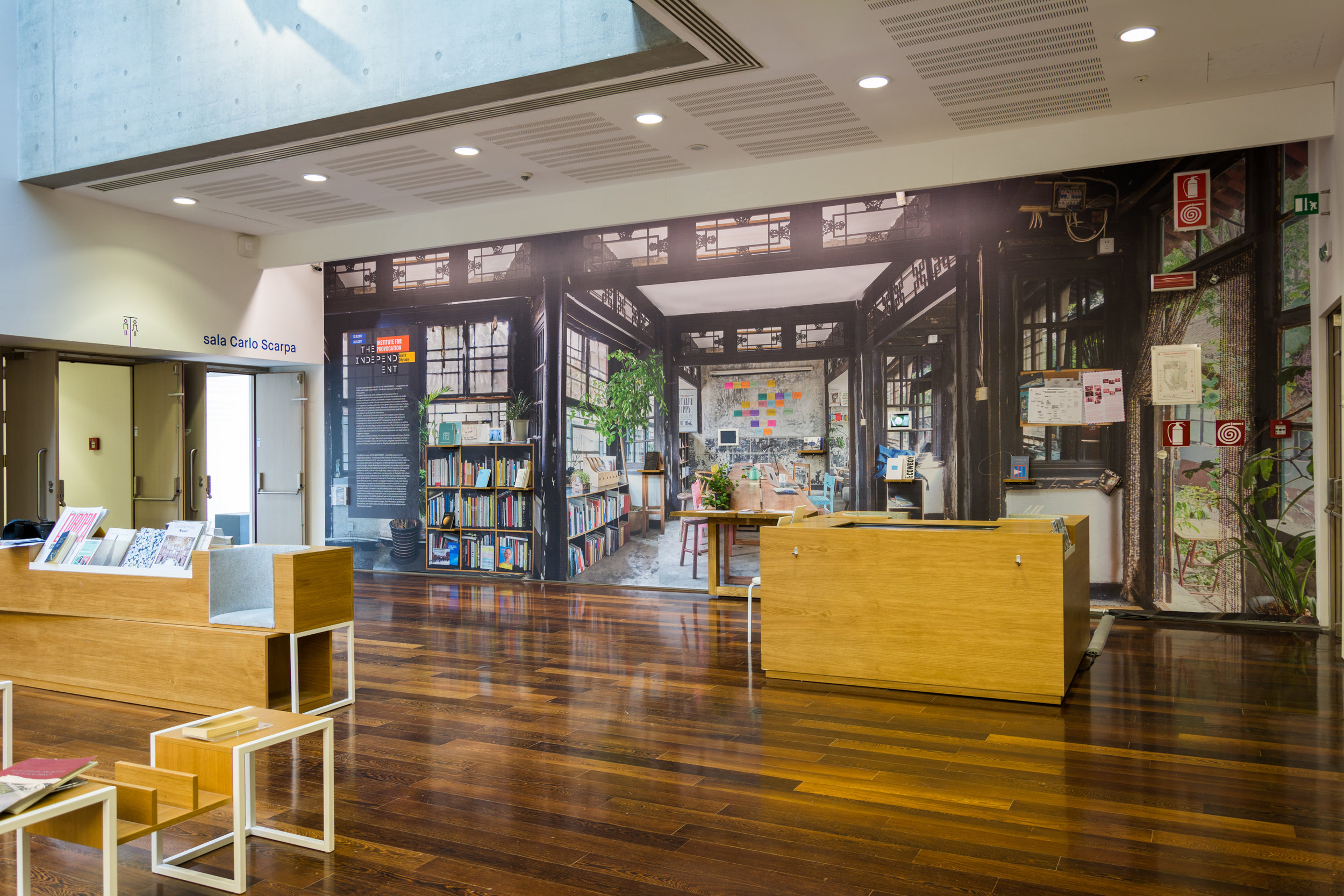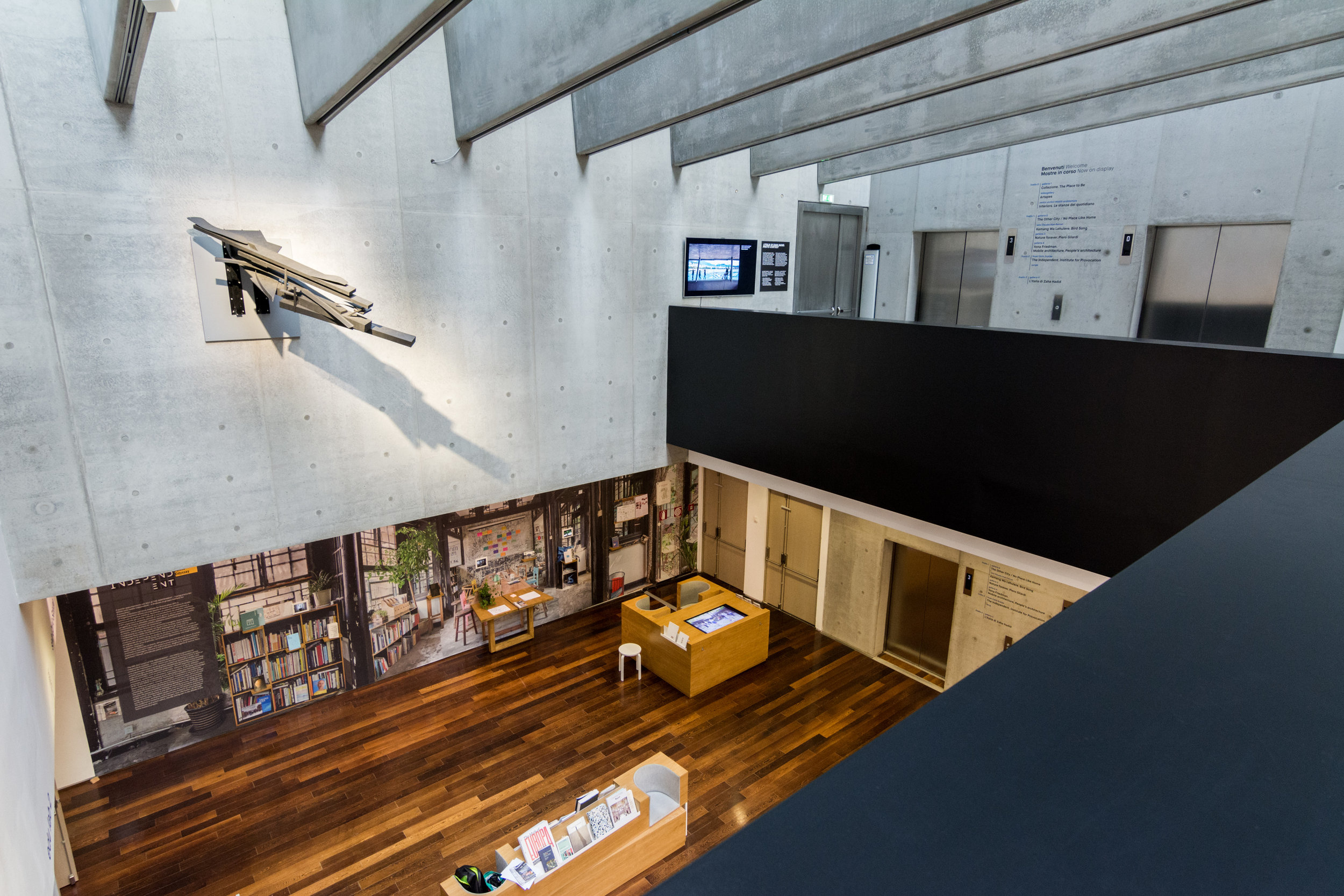SPACE ODYSSEY
2017
Exhibition @ MAXXI Museum, Rome
Status: Realised
As the former joint directors of the Institute for Provocation in Beijing, I was invited together with my partner Shuyu Chen to present our institution at the MAXXI museum in Rome, as a part of their series “The Independent” focusing on independent art spaces around Italy and the world. The exhibition was an installation in the lobby of the second floor of the museum, just above the main entrance hall, and there was also a talk on the opening day together with the curator, invited guests and the museum director, Hou Hanru.
How can an art space present itself and its activities, community and actions without entering into the dilemmas associated with representation? How to transmit the energy of an independent space into the institutional walls of a museum?
With the wallpaper installation in the Foyer Guido Reni we want to transmit the physical environment of the IFP Studio and its layers of history and micro-social activity. The courtyard in Heizhima hutong 13 where IFP is located was built by a wealthy salt dealer who was also a minister during the Qing Dynasty. After 1949, the courtyard was taken over by the Ministry of Coal and Mining and its officials from high to low were distributed residential units. But over the last 50 years of social transition, it declined gradually from a secure and intimate socialist neighborhood into a Da Zayuan (“messy” tenement courtyard). The IFP Studio is a pavilion which in the 19th century was used as the master’s library and for receiving guests. Now this pavilion forms an important role as the physical framework of IFP´s activities, and is used for co-working, meeting and public events.
The content presented between the lines of the wallpaper presents a selection of work by artists, architects and researchers associated with IFP’s work so far. Taking a step back, the output can be read as a stream of evolving around the following questions: How can the practice of an alternative space be part of the constitutions of society and contribute to its cultural production? What kind of organizational forms can be established to accommodate and support alternative forms of artistic research? As a platform, IFP supports content generated in China but also connects with artists and entities operating in a nomadic form. IFP thus supports the mobility of artists and researchers by being a work station firmly grounded in its own Asian context.
The audience is invited to explore the image, read the stories, browse our publications and watch the videos. They are also welcome to join the discussion of the research project Tetris, by putting their own tags onto the wallpaper.

